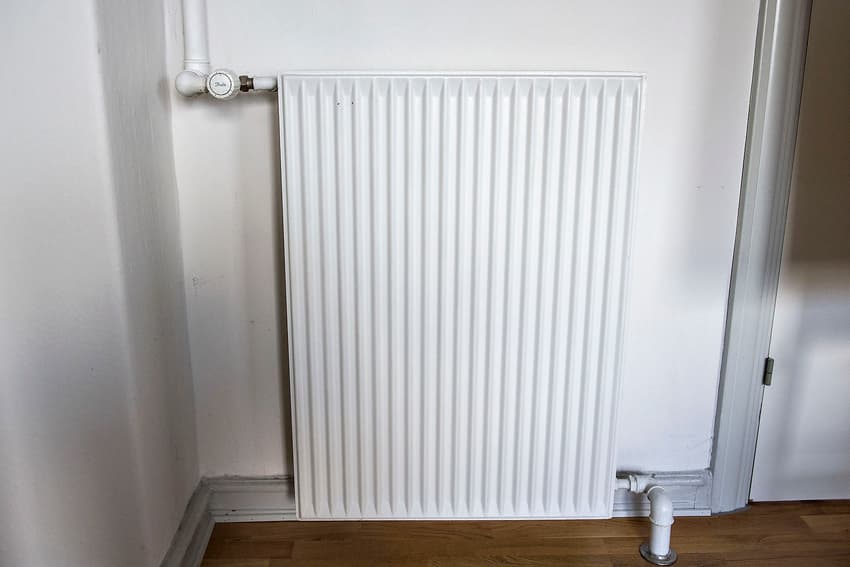Danish housing companies ask residents to turn on radiators

Public housing authorities in several municipalities are urging Danish households to end their autumn hold-outs and turn radiators on for the approaching winter.
Between an unusually mild autumn and steep energy prices, many families have bundled up rather than start the radiators for the year, broadcaster DR reports.
But the risk of toxic mould means you shouldn’t postpone any longer, housing authorities have warned.
A number of measures at public and private workplaces have sought to save energy consumption in advance of predicted high prices and potential shortages.
Households have also refrained from using heating, aided by a milder autumn than usual.
Denmark’s heating season or fyringssæson usually begins at the start of October.
READ ALSO:
- EXPLAINED: When should I turn on my heating in Denmark this year?
- EXPLAINED: How can households in Denmark postpone paying their energy bills?
- Danes change habits to cut energy use at home by over 12 percent
Companies that run Denmark’s subsidised rental housing (almene boligselskaber) say that residents should now turn their heating up to avoid the risk of mould.
Additionally, homes should be aired regularly to prevent conditions that allow mould to grow.
Linen should not be dried indoors where possible.
“We are all aware that we are in a serious situation with rising energy prices across the country and we have therefore all been encouraged to think about our energy use,” the largest housing association in Ballerup Municipality, Baldersbo, wrote in a letter distributed locally and reported by DR.
The company, which administers 3,700 homes in the area, said that “a lacking of heating in homes can cause serious internal climate problems in the form of mould.”
“People dry their clothes, they have varying behaviours in their homes which can cause problems if it’s not warm enough,” the housing company’s director Søren S. Christiansen told DR.
Ballerup is not the only locality where the issue has been raised. A housing association in Jutland town Viborg has issued a similar message to 5,500 residents, DR writes.
In new construction buildings, keeping all rooms at a minimum of 18 degrees might be enough, experts told DR.
For older buildings, especially “brick homes built between the 1930s and 1960s,” residents should aim for 20 degrees, energy and interior climate expert Tue Patursson of housing research institute Videncentret Bolius said to the broadcaster.
Comments
See Also
Between an unusually mild autumn and steep energy prices, many families have bundled up rather than start the radiators for the year, broadcaster DR reports.
But the risk of toxic mould means you shouldn’t postpone any longer, housing authorities have warned.
A number of measures at public and private workplaces have sought to save energy consumption in advance of predicted high prices and potential shortages.
Households have also refrained from using heating, aided by a milder autumn than usual.
Denmark’s heating season or fyringssæson usually begins at the start of October.
READ ALSO:
- EXPLAINED: When should I turn on my heating in Denmark this year?
- EXPLAINED: How can households in Denmark postpone paying their energy bills?
- Danes change habits to cut energy use at home by over 12 percent
Companies that run Denmark’s subsidised rental housing (almene boligselskaber) say that residents should now turn their heating up to avoid the risk of mould.
Additionally, homes should be aired regularly to prevent conditions that allow mould to grow.
Linen should not be dried indoors where possible.
“We are all aware that we are in a serious situation with rising energy prices across the country and we have therefore all been encouraged to think about our energy use,” the largest housing association in Ballerup Municipality, Baldersbo, wrote in a letter distributed locally and reported by DR.
The company, which administers 3,700 homes in the area, said that “a lacking of heating in homes can cause serious internal climate problems in the form of mould.”
“People dry their clothes, they have varying behaviours in their homes which can cause problems if it’s not warm enough,” the housing company’s director Søren S. Christiansen told DR.
Ballerup is not the only locality where the issue has been raised. A housing association in Jutland town Viborg has issued a similar message to 5,500 residents, DR writes.
In new construction buildings, keeping all rooms at a minimum of 18 degrees might be enough, experts told DR.
For older buildings, especially “brick homes built between the 1930s and 1960s,” residents should aim for 20 degrees, energy and interior climate expert Tue Patursson of housing research institute Videncentret Bolius said to the broadcaster.
Join the conversation in our comments section below. Share your own views and experience and if you have a question or suggestion for our journalists then email us at [email protected].
Please keep comments civil, constructive and on topic – and make sure to read our terms of use before getting involved.
Please log in here to leave a comment.